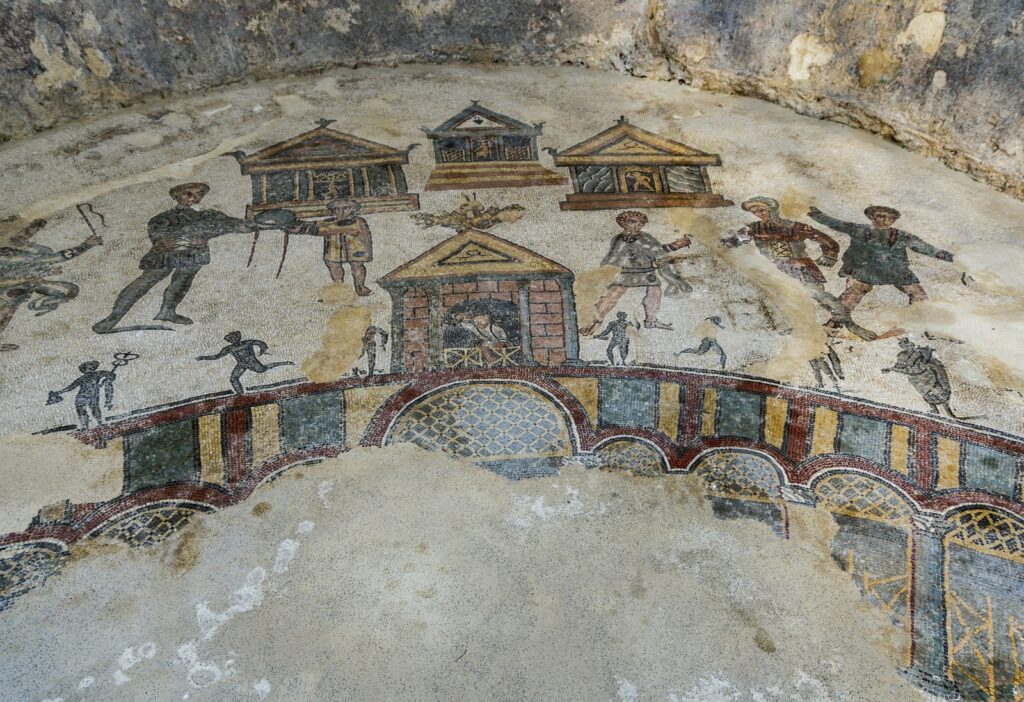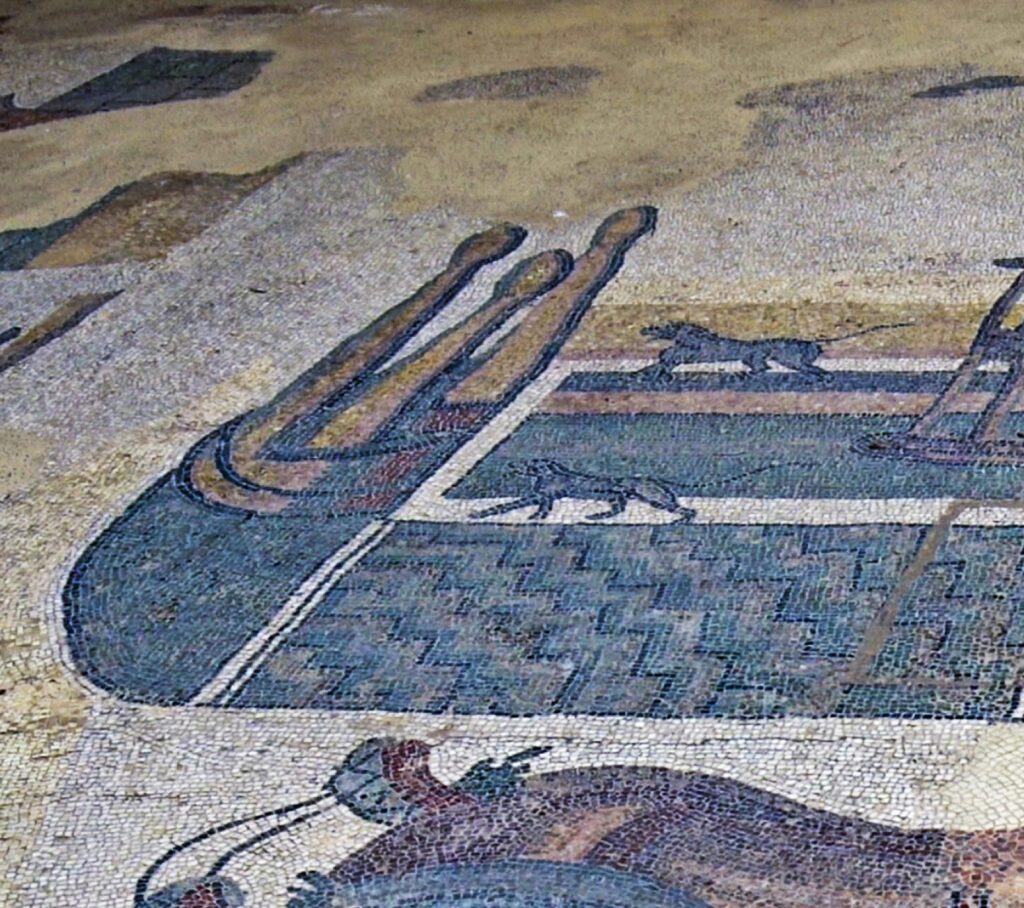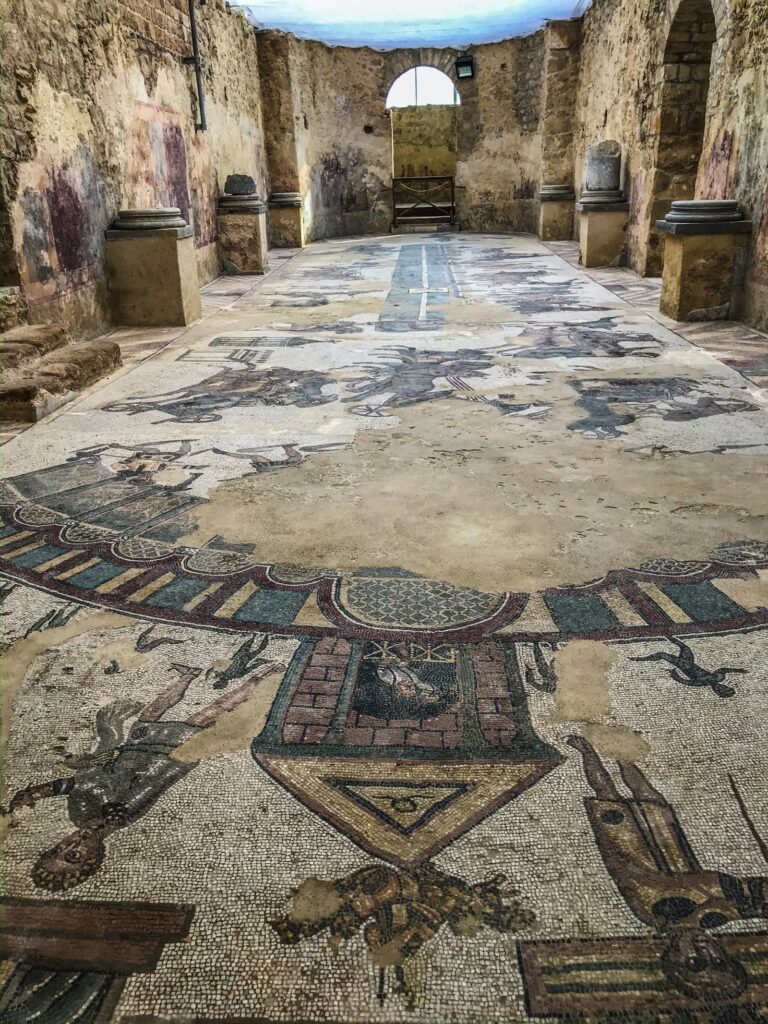A completely different reading from the one highlighted in the mosaic decoration of the room, with the depiction of a competition between different factions held at the
Circus Maximus
, is given by some late antiquity writings.
They put forward the hypothesis of an astral interpretation of the scene, establishing a correspondence between each element of the Circus and the stars, just as the cosmic order is reflected in the organisation of the Empire. The twelve carceres,  the gates from which the chariots departed, each crowned by a statue of a deity, symbolise the months of the year and the signs of the zodiac, the four factions are the seasons, the chariots can be traced back to the sun and the curricle to the moon.
the gates from which the chariots departed, each crowned by a statue of a deity, symbolise the months of the year and the signs of the zodiac, the four factions are the seasons, the chariots can be traced back to the sun and the curricle to the moon.
Other constituent elements of the Circus, such as the
metae
 of the spina, represent the poles of the celestial axis, while the laps of the route recall the passing of years. Finally, the delimited structure of the Circus
of the spina, represent the poles of the celestial axis, while the laps of the route recall the passing of years. Finally, the delimited structure of the Circus  would represent the limites aetherei, the boundaries of the sky.
would represent the limites aetherei, the boundaries of the sky.